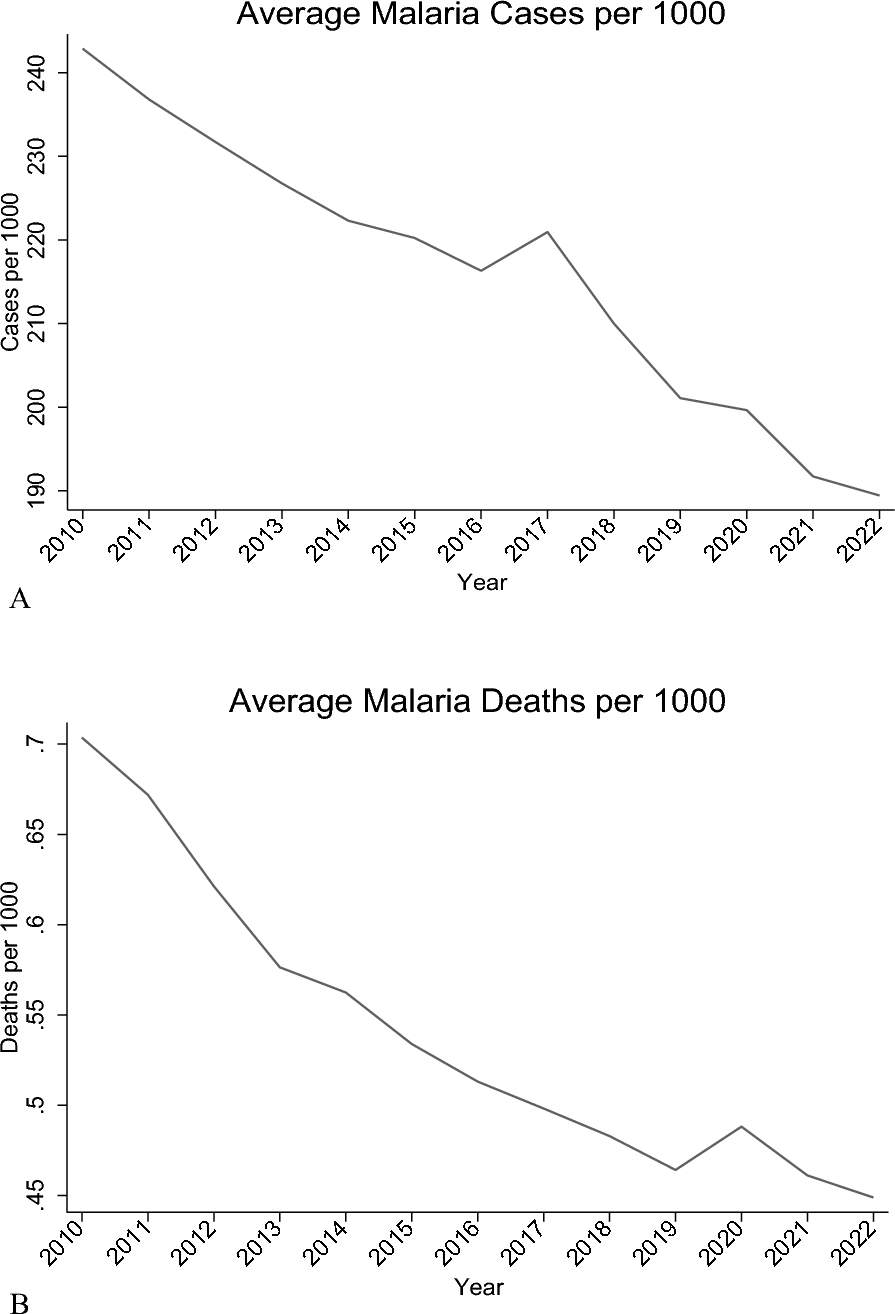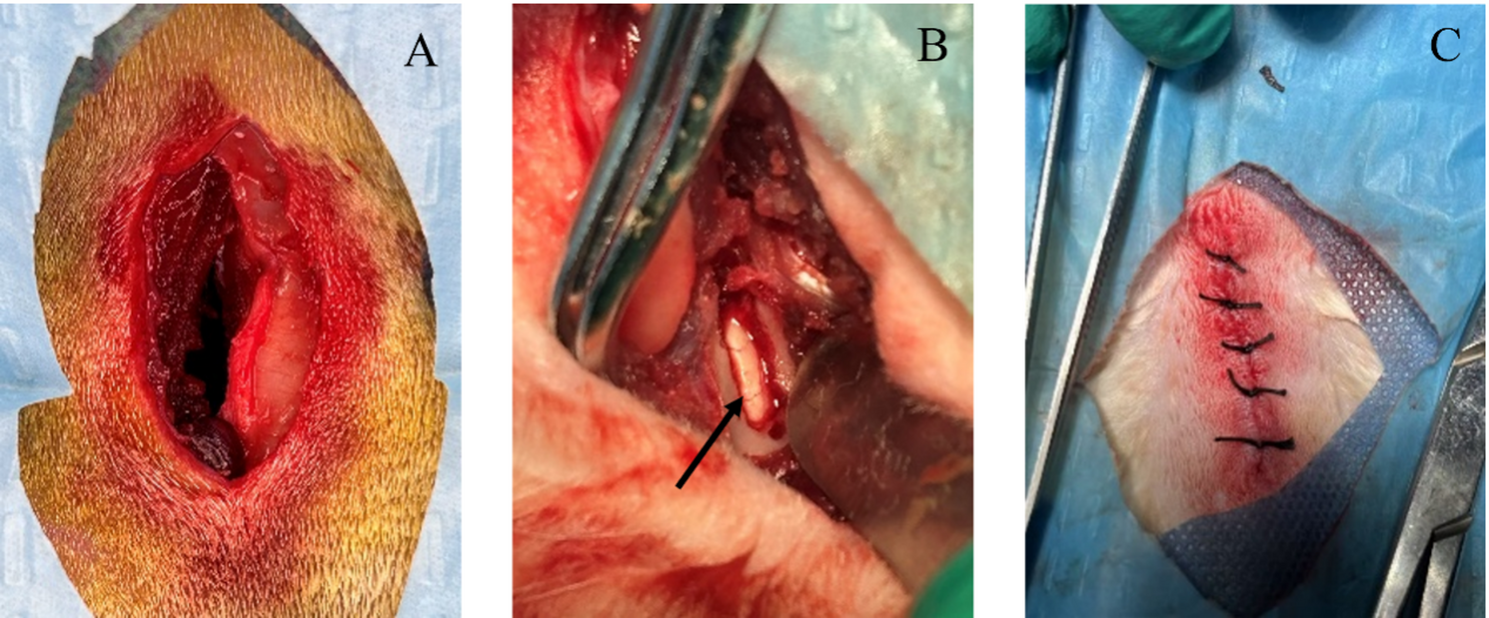Pakistan national football team head coach…
Blog
-

Institutional quality, aid flows, and malaria burden: a geospatial analysis of sub-Saharan Africa | Malaria Journal
Bhatt S, Weiss DJ, Cameron E, Bisanzio D, Mappin B, Dalrymple U, et al. The effect of malaria control on Plasmodium falciparum in Africa between 2000 and 2015. Nature. 2015;526:207–11.
Google…
Continue Reading
-

Establishment of a rabbit model for microscopically assisted posterior lumbar fenestration | Journal of Orthopaedic Surgery and Research
Experimental conditions and equipment
This study was approved by the Institutional Animal Care and Use Committee of Shihezi University (Approval No. A2024-392). All surgical procedures were performed in the Animal Laboratory of Shihezi University…
Continue Reading
-

Spotify and Barça press ‘Play’ with Ed Sheeran for the upcoming Clásico
The seventh Spotify logo change on the Barça shirt will have the honour of welcoming Ed Sheeran. The British artist becomes the first male solo pop musician to feature on an FC Barcelona jersey, with the logo of his latest studio album, Play,…
Continue Reading
-

Taking Triple Leaps to AI UBB and Inspiring New Business Growth
[Paris, France, October 13, 2025] At the 11th Ultra-Broadband Forum (UBBF) 2025, James Chen, the President of Huawei’s Carrier Business, shared a number of new best practices the company has developed with operators that drive growth with AI-powered ultra-broadband (UBB). In his keynote speech, “Triple Leaps to AI UBB: Inspiring New Business Growth,” Chen said operators have taken leaps in depth, breadth, and height to create new growth in the AI UBB era.
James Chen, President of Huawei Carrier Business, delivering a keynote speech
“Leapfrog innovations drive great business success,” he said. “Operators can seize this major opportunity to create new growth by deepening experience assurance capabilities, expanding business boundaries to include digital and intelligent services, and competing at higher levels by accelerating network intelligence.” Based on operators’ practices in different sectors, Chen interpreted the leaps in three dimensions of innovation: depth, breadth, and height.
A leap in depth: Driving a paradigm shift from bandwidth- to experience-centric monetization
Carriers combine AI capabilities with networks to accurately detect where application experience improvements are needed and proactively ensure the experience of key applications such as AI cloud gaming and 4K livestreaming, achieving a leap from user-level to application-level experience monetization.
An example of how this new monetization model helps operators is a leading operator from Thailand that has used Huawei’s AI WAN solution to develop new application-level experience assurance capabilities. This operator can now provide application acceleration packages for services such as gaming, home office, and livestreaming. This has enabled users to enjoy a smoother gaming experience, while the operator has drastically increased average revenue per user (ARPU).
A leap in breadth: Pushing the business boundaries to include digital intelligence and computing services
- In the home network market: Global operators collectively have over 1 billion home gateways, which give them a natural advantage in upgrading from home network providers to smart home service providers. This year, Huawei developed a new home gateway – the AI Homehub, which supports voice interaction and quick AI agent deployment. One operator has rolled out smart home services using this home gateway and increased its ARPU of home services by 60%.
- In the SME market: Operators can use fiber to the office (FTTO) solutions to build a unified management platform, and provide SMEs with standard digital and intelligent services such as video and IoT services, helping enterprises realize intelligent transformation. Huawei has developed a series of FTTO solutions that integrate network, security, and computing capabilities. China’s three major carriers have already commercially used solutions such as these at scale to develop more than 2 million FTTO users.
- In the mid-sized and large enterprise market: Operators are using Wi-Fi-based integrated sensing and communications to develop new tools for growth. For example, some operators have used the technology in scenarios such as fall detection in elderly care and intelligent meeting room management for enterprises. In the UAE, e& has used Huawei’s AirEngine Wi-Fi 7, an integrated sensing and communications product, to provide Wi-Fi-as-a-Service offerings, which help enterprises reduce the TCO of a meeting room sensing system by 67%. Within a year, e& has gained 13% more customers.
- In the blue-ocean market of AI enterprise services: More enterprises are accessing cloud compute and require on-premise data processing, which requires networks that support new capabilities such as lossless transmission, elasticity, and security. This means computing-network service opportunities for operators. Huawei has worked with China Telecom Shanghai to develop an intelligent IP WAN with high computing usage effectiveness (CUE). This network enables enterprise customers to expand compute capacity in just weeks with less than 5% CUE loss. This means reliable access to AI DCs for enterprises and ensures that privacy data always stays within the enterprise.
A leap in height: Network O&M transformation from work-order-driven operations to intelligent operations
Operators can drive level 4 network autonomy for more intelligent networks to move away from work-order-driven operations towards intelligent operations.
For example, Huawei has worked with MasOrange in Spain to build Europe’s first level 4 autonomous IP network. Using iMaster NCE, the operator has been able to reduce mean time to repair (MTTR), which in turn helps to enhance user satisfaction.
Chen wrapped up his speech by saying that AI UBB is just starting out, and that Huawei is excited to work with operators and industry partners to pursue continuous innovation. The company aims to help operators succeed in the AI era through experience monetization, a second growth curve, and OPEX reduction.
Continue Reading
-

Great Scott! Casio’s £115 Limited-Edition ‘Back to the Future’ Watch Takes You Straight Back to 1985
Casio is marking the 40th anniversary of Back to the Future with a special edition of its classic calculator watch, the CA-500.
The new limited model, the CA-500WEBF, revives the original 1980s design made famous on Marty McFly’s wrist – this…
Continue Reading
-

Advantest Announces Call for Papers for VOICE 2026
TOKYO, Oct. 14, 2025 (GLOBE NEWSWIRE) — Leading semiconductor test equipment supplier Advantest Corporation (TSE: 6857) today announced a global call for papers for its VOICE 2026 Developer Conference, focusing on leading-edge technologies…
Continue Reading
-

The hidden cost of playing it safe in uncertain times
14 October 2025
… min readAsk almost any CFO today what keeps them awake at night, and the answer is the same: uncertainty. Markets shift without warning, geopolitical tensions flare, and the pressure to deliver on cost never quite eases. For leaders trained to manage risk, the instinct is to hold on tighter -to stick with what feels safe and predictable. But in business, comfort can become a trap. What feels safe in the moment often keeps progress stuck.
Research shows 70% of CFOs in Europe don’t want to take any risks right now. Whereas in the US, two-thirds are actually planning to invest almost nine percent more in their businesses. And history shows, it’s those who act that set the pace. Today’s CFOs are no longer just guardians of the balance sheet. They are the drivers of change. Digitalisation, decarbonisation, AI – none of these come with certainty. All demand courage.
‘Get un’
That’s why in our latest Wholesale Banking campaign we called on business leaders to break out of their comfort zones and “get un—” : unstuck from what’s holding them back; unbound from legacy thinking; unscripted from the way things are usually done; and unboxed by borders. All rooted in the belief that progress is always possible.
The digital campaign ran in France, Belgium, Italy, Poland, Romania, Singapore and the UK during August and September. It was featured on websites of the Financial Times and Bloomberg and appeared on other relevant business and financial websites targeting key financial professionals, including treasurers, cash managers, finance directors & CFOs of large multinational companies enterprises.
It aimed to help clients navigate uncertainty and unlock opportunities with a mix of strategic thinking, financial expertise and real-world understanding of the sectors and markets they’re active in.
Continue Reading
-

IATA Highlights Critical Priorities for Aviation Safety and Operations
Translations: 国际航协强调航空安全与运行的关键优先事项 (pdf)
L’IATA souligne les priorités essentielles pour la sécurité et les opérations aériennes (pdf)
IATA destaca las prioridades para una aviación segura (pdf)
Xiamen – The International Air Transport Association (IATA) highlighted three critical priorities for aviation safety and operations as the World Safety and Operations Conference (WSOC) opened today in Xiamen, China. These are: defending and evolving global standards, fostering a strong safety culture through leadership, and using data to enhance performance amid growing operational challenges.
“The environment in which airlines operate has grown even more complex as conflicts and regulatory fragmentation have proliferated. As a result, we have seen airspace closures, drone incursions and rising global navigation satellite system (GNNS) interference disrupt connectivity, undermine confidence, and threaten safety. Ensuring aviation remains the safest mode of transport requires strong leadership, robust adherence to global standards, and smarter use of data. By focusing on these—industry and government together—we will build a safer, more resilient and increasingly efficient global aviation system that can manage today’s risks and is prepared for those of tomorrow,” said Mark Searle, Global Director Safety, IATA.
Defending and Advancing Global Standards
Global standards are essential to aviation safety. Current standards must be adhered to and future standards must be developed to continuously improve industry safety performance. Currently, this focus revolves around:
- Addressing GNSS Interference: Reports of GNSS interference have increased by more than 200% between 2021 and 2024. Neither spoofing nor jamming of GNSS systems is acceptable. Together with EASA, IATA has launched a GNSS Resilience Plan built on four priorities: monitoring and reporting, prevention tools, backup infrastructure, and civil–military coordination. The next step is for ICAO to advance these solutions through global standards, guidance, and reporting.
- Protecting Aviation’s Radio Spectrum: The radio spectrum essential for aviation navigation, defined in ITU’s global standards, must be safeguarded. The rapid expansion of 5G, and soon 6G, is putting pressure on aviation’s allocations. In several markets, including Australia, Canada and the United States, 5G rollouts have created interference risks near airports and forced costly retrofits. Stronger coordination with telecommunications regulators and realistic timelines for mitigation are urgently needed, along with the development of more resilient on-board systems.
- Timely Accident Investigation Reporting: Global standards under Annex 13 of the Chicago Convention clearly define the need for timely accident investigations. Yet, only 58% of accidents between 2019 and 2023 have produced a final report. Delays hinder the industry’s ability to learn vital safety lessons and create space for speculation and misinformation. IATA continues to remind governments of their obligations while recognizing progress, such as the prompt preliminary reports issued following recent accidents in India, South Korea, and the United States.
Using Data to Enhance Performance
Data is transforming aviation safety, delivering the insights needed to anticipate risks and enhance performance. Through the Global Aviation Data Management (GADM) program, which integrates the Flight Data eXchange (FDX), Incident Data eXchange (IDX), and Maintenance Cost Data eXchange (MCX), IATA is enabling data-driven decision-making across airlines and regulators.
Areas where data is making a difference include:
- Turbulence Aware: IATA’s Turbulence Aware platform shares data in real-time, enabling pilots and dispatchers to mitigate the risks stemming from inflight turbulence. Participation in the platform grew 25% over the past year, with 3,200 aircraft including Air France, Etihad, and SAS now sharing real-time turbulence data to enhance flight safety and efficiency.
- Predictive safety insights: The SafetyIS database, drawing on in-flight data from 217 airlines, enables predictive analysis. For example, early identification of a spike in collision-avoidance alerts at a Latin American airport allowed swift action to reduce risks.
- Risk-based IOSA: The risk-based IOSA audit model is well-established in using data to tailor audits to each airline’s operational profile. Already it has resulted in more than 8,000 corrective actions that are strengthening safety.
Fostering a Strong Safety Culture Through Leadership
Leadership is central to a strong aviation safety culture. Strong safety leadership creates an environment where employees are empowered to raise concerns and are confident that issues will be resolved quickly and effectively.
To reinforce this, IATA has developed two key initiatives:
- Safety Leadership Charter: Promoting eight core principles of safety leadership, the Charter now covers around 90% of global traffic, strengthening a culture built on leadership, global standards, and data.
- IATA Connect: Bringing together 5,600 users from over 600 organizations, IATA Connect enables access to IOSA documentation, the Safety Issue Hub, and Safety Connect, and will soon expand to include ISAGO users.
For more information, please contact:
Corporate Communications
Tel: +41 22 770 2967
Email: corpcomms@iata.orgNotes for Editors:
- IATA (International Air Transport Association) represents some 350 airlines comprising over 80% of global air traffic.
- You can follow us on X for announcements, policy positions, and other useful industry information.
- Fly Net Zero
Continue Reading

